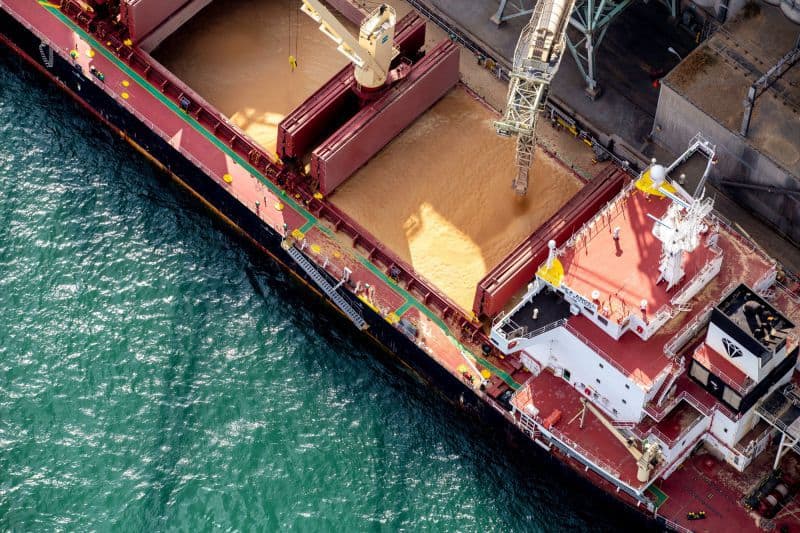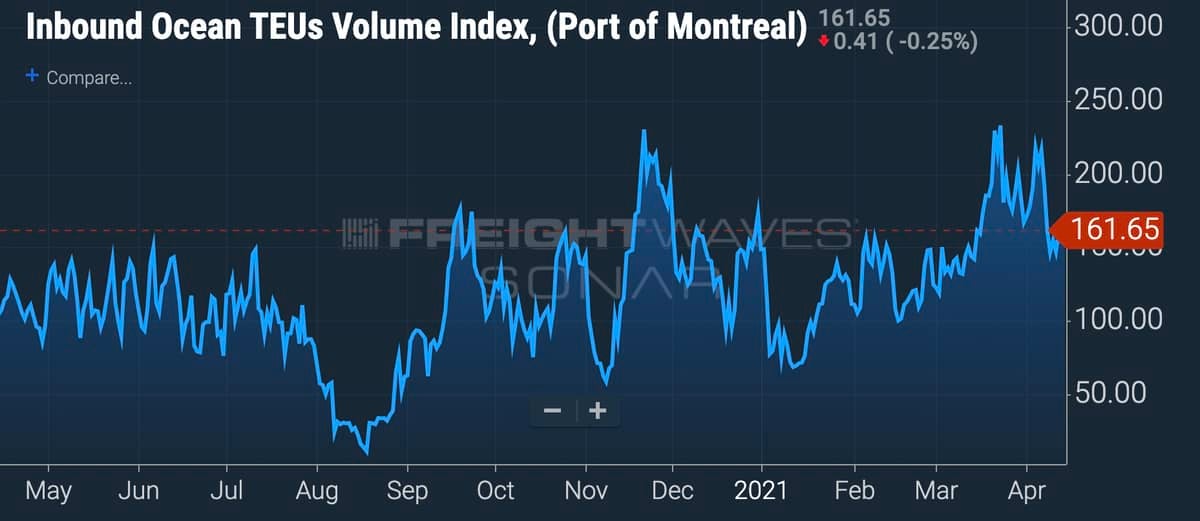These are troubling times for the Port of Montreal.
On Tuesday, longshoremen at Canada’s second-busiest port began a partial strike, refusing to work overtime on weekends. It came in response to a move by their employers to stop providing a guaranteed base pay regardless of hours worked.
Another full strike is an increasingly likely possibility. The longshoremen, represented by Canadian Union of Public Employees (CUPE) 375, struck for 12 days last summer after talks with the Maritime Employers Association (MEA) failed to produce a contract. The strike ended with a seven-month truce that expired in March.
The labor dispute is hurting the port and the wide swath of the Canadian economy that relies on it. The Montreal Port Authority said cargo volumes fell by 11% in March – this at a time when competitors in Canada and the U.S. are contending with a deluge of container traffic spurred by COVID demand.
“When you see this happen, it’s literally a black eye for Canada,” said Corey Darbyson, managing director of Transport Dsquare, a Montreal-based trucking and logistics company that serves the port.
Just how much cargo does Montreal handle?

The Port of Montreal handled 35.1 million metric tons of cargo and bulk products in 202. More than 40% of that came from containers. That translated into 1.6 million 20-foot equivalent units (TEUs) worth of containers. Only the Port of Vancouver, on the West Coast, handled more among Canadian ports — 3.5 million TEUs. Around $80 billion worth of goods go through the port each year, according to the Montreal Port Authority.
Which shipping lines serve it?
Seven international shipping lines serve the port, CMA-CGM, MSC, Hapag Lloyd, Cosco, Maersk, OOCL and Falline.
What makes Montreal special?
One of Montreal’s selling points is its inland location. It’s within quick reach of Toronto, one of North America’s largest freight markets, and the Midwest U.S. As many as 2,500 trucks serve the port daily, while CN (NYSE: CNI) and Canadian Pacific (NYSE: CP) provide on-dock rail service. Montreal also offers one of the quickest ways for vessels to reach North America from the Mediterranean. The port also has served as main hub for the growing trade between Canada and the European Union under the Comprehensive Economic and Trade Agreement (CETA).
What happens in the event of another full strike?
During the 2020 strike, vessels and cargo diverted to Halifax, Saint John and New York-New Jersey. The strike also led to months of container backlogs. But there is one big difference between then and now: Port congestion is a lot worse.
Simply put, it won’t be pretty. And it likely would lead to delays and shortages of consumer goods across Eastern Canada.
Darbybson also fears another strike could result in the port permanently losing business.
“That’s not something you want to see,” he said.

So what exactly is this labor dispute about?
The longshoremen have been without a contract since 2018. It’s not clear exactly why CUPE and the MEA haven’t been able to agree on a new one. Neither side has made the details public. But union officials have given some hints: working conditions and work-life balance.
How did it get so bad?
The longshoremen and port operators have a long history of ugly disputes. The 2020 strike came 10 years after another contract fight led to a lockout. But there was hope that the truce that ended the 2020 strike would lead to a new contract. Instead, they seem to be back where they started.
“It’s unusual that they’ve had one dispute after another like this,” said Sara Slinn, a Canadian labor expert and professor at Osgoode Hall Law School at York University in Toronto.
But she noted that union-employer disputes are notoriously tough at the ports: “If you have one strike by a group of workers, it freezes up the entire port. And there’s a lot of money at stake.”
Will the feds step in?
Canadian industry groups are calling on for Prime Minister Justin Trudeau’s government to step in to end the partial strike. While the government hasn’t done anything publicly yet, Slinn said it likely has little patience for a full strike and another costly disruption.
“I think the government is very likely to step in here,” Slinn said. “When it comes to back-to-work legislation, all the ducks are lining up for that. That may explain why the union stopped short of calling a full strike. “They’re walking quite a tightrope.”
Click for more FreightWaves articles by Nate Tabak










